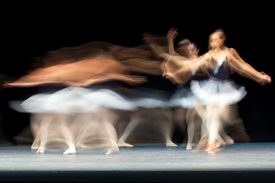 When a dancer is finding their feet within the performing arts sector, and getting to grips with all its intricacies, they could be forgiven for thinking that when they are performing, it is better to perform something more difficult rather than perform it well. Unfortunately this does not bode well, in particular in terms of the dancer’s development, how they are perceived by others and also their expectations of the world of dance around them.
When a dancer is finding their feet within the performing arts sector, and getting to grips with all its intricacies, they could be forgiven for thinking that when they are performing, it is better to perform something more difficult rather than perform it well. Unfortunately this does not bode well, in particular in terms of the dancer’s development, how they are perceived by others and also their expectations of the world of dance around them.
On the dance competition circuit particularly, many competitors can be seen attempting dance moves and combinations beyond their ability, decreasing the value of their performance in the process. For many competition judges, they would prefer to see something simpler performed with greater artistry and skill, than something beyond the capability of the dancer on stage. Teachers may challenge their students in class with complex sequences in order to extend their skills, however on the stage it can be viewed as messy and amateur when it is not performed correctly.
As a result, many may argue difficulty should not come before the execution of a dance move. There is no doubt that competitions demand more and more from competing dancers, but it is more important to execute the dance well, with correct technique and high quality, rather than struggle with something the teacher has given the student that is too challenging. Dance continues to want dancers that are stronger, faster and that can kick higher yet this can come at a cost. Students may attempt movements they have seen other, perhaps older dancers perform, before their coordination and strength is properly in place in order to support these new moves. Dancers can come sequent train bad habits and experience injuries that plague as a result from being pushed too fast and sidestepping technique.
